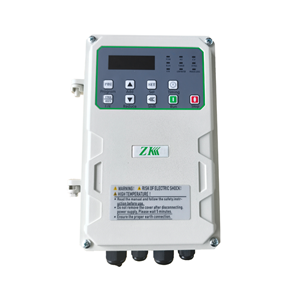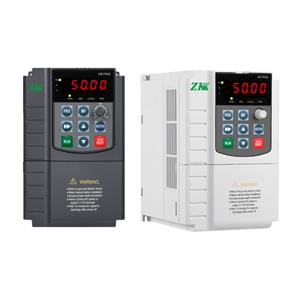New Power Factor Correction Technology in VFD
Power Factor Correction (PFC) is a fundamental aspect of modern electrical systems, particularly in applications utilizing Variable Frequency Drives (VFDs). As integral components in controlling motor speed and optimizing energy consumption, Variable Frequency Drives (VFDs) are widely implemented in industrial machinery, HVAC systems, and renewable energy applications. However, traditional Variable Frequency Drives (VFDs) often introduce harmonic distortion and degrade the power factor in electrical grids, presenting challenges in energy efficiency and compliance. As industries pursue smarter solutions, the incorporation of advanced PFC techniques within Variable Frequency Drives (VFDs) has emerged as critical innovation. These cutting-edge approaches not only mitigate harmonic distortion but also enhance energy efficiency, system stability, and grid compatibility.
Understanding Power Factor and Its Significance
Power factor refers to the ratio of real power - utilized for performing useful work - to apparent power. A power factor near unity (1.0) signifies optimal energy utilization. Variable Frequency Drives (VFDs), however, typically reduce the power factor due to reactive power consumption and motor load regulation. The high-frequency switching inherent to Variable Frequency Drives (VFDs) exacerbates harmonic distortion, potentially triggering grid compliance violations. To overcome these challenges, engineers have developed advanced PFC technologies for improved power quality in Variable Frequency Drives (VFDs) applications.
Advanced PFC Techniques for Variable Frequency Drives (VFDs) Applications
1. Active Power Factor Correction (APFC)
Active PFC employs power electronic circuits like boost converters to shape input current waveforms. This approach minimizes harmonic distortion and improves power factor through real-time adjustment. In Variable Frequency Drives (VFDs) systems, active PFC is integrated at the input rectifier stage, enabling near-unity power factor under dynamic loads.
2. Digital Control Algorithms
Advanced digital signal processors (DSPs) in Variable Frequency Drives (VFDs) implement sophisticated algorithms for dynamic PFC optimization. Techniques like adaptive feedforward control enable precise compensation for load fluctuations, enhancing PFC system robustness.
3. Wide Bandgap (WBG) Semiconductor Integration
WBG materials like silicon carbide (SiC) enable higher switching speeds in PFC circuits. Variable Frequency Drives (VFDs) systems with WBG-based PFC achieve superior efficiency for high-torque motor drives through reduced power losses.
4. Passive Power Factor Correction
Passive PFC techniques using harmonic filters remain relevant when combined with active methods. Hybrid PFC systems leverage both approaches for enhanced harmonic suppression.
5. Advanced Three-Phase PFC Strategies
Large-scale Variable Frequency Drives (VFDs) applications employ three-phase PFC solutions like Vienna rectifiers. These systems reduce conduction losses while maintaining high power factor correction efficiency.
Benefits of Advanced PFC in Variable Frequency Drives (VFDs) Systems
The adoption of advanced PFC technologies yields significant advantages:
· Enhanced energy efficiency through minimized reactive power
· Harmonic distortion reduction ensuring grid compliance
· Improved component reliability via reduced electrical stress
· Compact designs enabled by WBG semiconductor integration
· Environmental benefits from lower carbon emissions
Challenges and Future Directions
Advanced PFC implementation faces challenges like design complexity and upfront costs. However, decreasing WBG material costs and AI-driven control advancements are accelerating adoption. Ongoing innovation focuses on cost-efficient, scalable PFC solutions for next-generation Variable Frequency Drives (VFDs) systems.
Advanced power factor correction techniques are transforming Variable Frequency Drives (VFDs) through harmonic distortion mitigation and energy optimization. As industries pursue sustainable practices, PFC-integrated Variable Frequency Drives (VFDs) solutions will remain vital for compliant, efficient motor control systems. These technologies exemplify the convergence of power electronics innovation and environmental stewardship in modern industrial applications.




